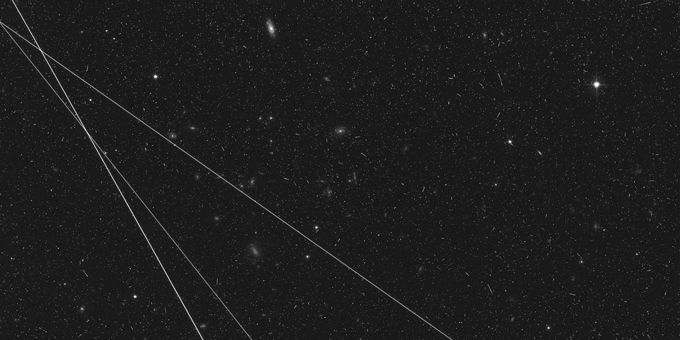Half of all active satellites are now from SpaceX. Here’s why that may be a problem
SpaceX’s rapidly growing fleet of Starlink internet satellites now make up half of all active satellites in Earth orbit.
On February 27, the aerospace company launched 21 new satellites to join its broadband internet Starlink fleet. That brought the total number of active Starlink satellites to 3,660, or about 50 percent of the nearly 7,300 active satellites in orbit, according to analysis by astronomer Jonathan McDowell using data from SpaceX and the U.S. Space Force.
Science News headlines, in your inbox
Headlines and summaries of the latest Science News articles, delivered to your email inbox every Thursday.
Thank you for signing up!
There was a problem signing you up.
“These big low-orbit internet constellations have come from nowhere in 2019, to dominating the space environment in 2023,” says McDowell, of the Harvard-Smithsonian Center for Astrophysics in Cambridge, Mass. “It really is a massive shift and a massive industrialization of low orbit.”
SpaceX has been launching Starlink satellites since 2019 with the goal of bringing broadband internet to remote parts of the globe. And for just as long, astronomers have been warning that the bright satellites could mess up their view of the cosmos by leaving streaks on telescope images as they glide past (SN: 3/12/20).
Even the Hubble Space Telescope, which orbits more than 500 kilometers above the Earth’s surface, is vulnerable to these satellite streaks, as well as those from other satellite constellations. From 2002 to 2021, the percentage of Hubble images affected by light from low-orbit satellites increased by about 50 percent, astronomer Sandor Kruk of the Max-Planck Institute for Extraterrestrial Physics in Garching, Germany, and colleagues report March 2 in Nature Astronomy.
The number of images partially blocked by satellites is still small, the team found, rising from nearly 3 percent of images taken between 2002 and 2005 to just over 4 percent between 2018 and 2021 for one of Hubble’s cameras. But there are already thousands more Starlink satellites now than there were in 2021.
“The fraction of [Hubble] images crossed by satellites is currently small with a negligible impact on science,” Kruk and colleagues write. “However, the number of satellites and space debris will only increase in the future.” The team predicts that by the 2030s, the probability of a satellite crossing Hubble’s field of view any time it takes an image will be between 20 and 50 percent.

The sudden jump in Starlink satellites also poses a problem for space traffic, says astronomer Samantha Lawler of the University of Regina in Canada. Starlink satellites all orbit at a similar distance from Earth, just above 500 kilometers.
“Starlink is the densest patch of space that has ever existed,” Lawler says. The satellites are constantly navigating out of each other’s way to avoid collisions (SN: 2/12/09). And it’s a popular orbital altitude — Hubble is there, and so is the International Space Station and the Chinese space station.
Subscribe to Science News
Get great science journalism, from the most trusted source, delivered to your doorstep.
“If there is some kind of collision [between Starlinks], some kind of mishap, it could immediately affect human lives,” Lawler says.
SpaceX launches Starlink satellites roughly once per week — it will launch 51 more on March 3. And they’re not the only company launching constellations of internet satellites. By the 2030s, there could be 100,000 satellites crowding low Earth orbit.
So far, there are no international regulations to curb the number of satellites a private company can launch or to limit which orbits they can occupy.
“The speed of commercial development is much faster than the speed of regulation change,” McDowell says. “There needs to be an overhaul of space traffic management and space regulation generally to cope with these massive commercial projects.”
For all the latest Technology News Click Here
For the latest news and updates, follow us on Google News.
